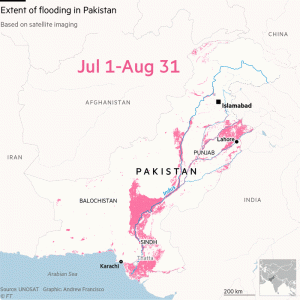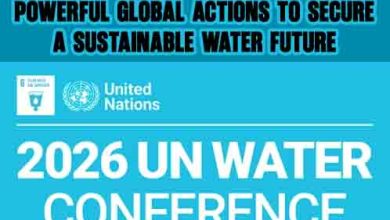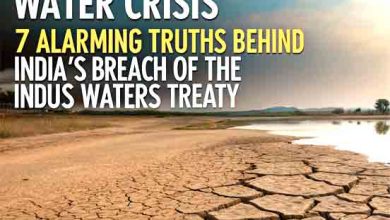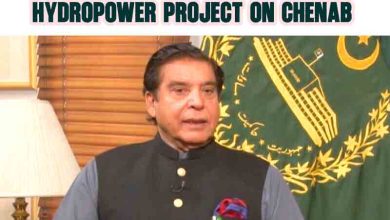‘It’s the fault of climate change’: Pakistan seeks ‘justice’ after floods
Source: Ft.com, 26 Oct, 2022r
Disaster puts country at forefront of debate about who should pay for ravages of global warming
When the Indus river burst its banks during heavy rains and flash flooding in late August, Bushra Sarfaraz’s three goats drowned and she lost her home for a second time.
The first time was in Pakistan’s floods in 2010 — the worst in recent memory until this year’s, which submerged vast swaths of low-lying areas, in what officials describe as the worst natural disaster in their country’s history.
“I want to feel settled for once in my life — to live in a place that doesn’t get washed away again and again,” said Sarfaraz, a labourer who is now living with her husband and children in a tent camp on rocky land near Thatta in Pakistan’s southern Sindh province.
While some of those displaced by the calamity have returned home since the waters began receding, others have no homes to return to, and are living in tents near pools of cloudy water, or on the side of roads a few metres above inundated fields.
“Every year the water comes, and every year we drown,” said Qurban Ali Lashari, another labourer displaced by the floods and living in the tent camp.
The disaster puts Pakistan at the forefront of evolving thinking in the international community about how to pay for countries’ adaptation to the ravages of global warming — and who should pick up the bill. Climate change contributed to up to 50 per cent of the rains that made this August the wettest on record in Sindh and neighbouring province Balochistan, according to a study by the World Weather Attribution group.
Pakistan’s government says the floods affected 33mn of its 230mn people, hitting the low-lying and normally arid southern provinces hardest. In flatlands with few slopes, the water that fell in August and September has nowhere to drain, and is evaporating slowly in drier weather.
Pakistan is now preparing to ask donors for new loans to clean up and rebuild infrastructure that would be able to withstand worsening weather patterns, in an effort it estimates will cost $30bn.
“If you look at the numbers, it is the climate event of the century, not just for Pakistan but for the whole world,” said Sherry Rehman, climate change minister. “It surpassed all numbers for climate events, and it is now creating a catastrophic health crisis.”
In the Thatta camp where Sarfaraz and Lashari live — one of 27 in the district — people are being treated for waterborne ailments including malaria, dengue, and diarrhoea. “Skin diseases are very common nowadays,” said Shireen Soomro, a doctor in the camp.
International and Pakistani officials have also warned that many farmers will not be able to sow their crops for months, after their fields were heavily silted by flood water. This, they say, raises fears about food security in a year when prices for foodstuffs soared after Russia’s invasion of Ukraine.
Pakistan was already in severe financial distress when the disaster struck. Days before the downpours and flash flooding hit, Islamabad had secured much-needed loan pledges from China and Gulf countries and a $2.2bn bailout from the IMF.
The UNDP, which is completing an assessment of the country’s recovery and rebuilding needs, last month proposed Pakistan should seek to suspend payments on its $130bn external debt so that it could prioritise its disaster response.
“We can’t service our debts, to be honest,” said Sakib Sherani, chief executive of Macro Economic Insights, a consultancy. “Floods or no floods, we would have had a problem in the next fiscal year.”

Some climate activists have argued that Pakistan’s floods bolster the case for “climate reparations”, or financial transfers from rich countries with the highest per capita greenhouse gas emissions to poor countries that emit less but are feeling the brunt of climate change.
However, in a country with a history of large-scale government corruption and fraught relations with lenders, officials are rejecting the notion, and honing their pitches to donors carefully.
Speaking to the Financial Times this month, prime minister Shehbaz Sharif ruled out a rescheduling and rejected the “reparations” notion, saying Pakistan needed “climate justice” instead in the form of new loans to recover and rebuild. A donors’ conference is due to be held in Paris in November.
Pakistan is also expected to be vocal on the issue at the upcoming UN climate summit in Egypt, as chair of the G77 group of developing nations.
Ahsan Iqbal, planning minister, told the FT that the government wanted bilateral support from the US and EU countries. He voiced hope that they would use their influence in multilateral institutions to help pay for the rebuilding of destroyed infrastructure, as well as providing preferential market access to Pakistani exports.
“Our challenge is that we lost a lot of ground on our development journey; we have been thrown back,” he said. “It is not our fault; it is the fault of climate change.”
Markets are pricing in deeper financial distress for Pakistan in the wake of the floods. Its 2024 sovereign Eurobond is currently yielding more than 80 per cent. Moody’s Investors Service this month downgraded Pakistan’s rating further into “junk” territory at Caa1, citing “higher debt sustainability risks” in the wake of the floods. Pakistan’s finance ministry contested the downgrade, and said it had enough liquidity to keep servicing its debt.
As local officials in Thatta deploy mobile medical teams and provide food rations to sustain people living in the tent camps, in Islamabad, the government is arguing for large-scale aid now to build in preparation for the next disaster.
“For us, this is the decisive decade — it’s not 2040 or 2050,” said Rehman. “We are clearly hurtling toward a 3 degree [warming] world which will be uninhabitable for countries near the equator, and for those that are not climate resilient — and climate resilience takes a lot of money.”







